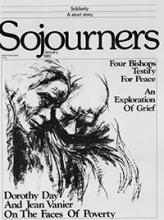At the end of last year, an avalanche of virulence toward Nicaragua and Cuba rumbled out of the Reagan administration, with Secretary of State Alexander Haig, Jr. as chief mouthpiece. The rhetoric was deposited in Mexico, St. Lucia, and Washington as Haig traveled to a variety of meetings. His abrasive accusations toward Nicaragua initiated a caustic exchange between Washington and Managua that Mexican President Jose Lopez Portillo referred to as "verbal terrorism."
The substance of the accusations is that the Soviet Union, acting through Cuba, is using Nicaragua in its scheme to export revolution throughout Central America, beginning in El Salvador. Haig said at a meeting of the Organization of American States (OAS) in St. Lucia on December 4: "Havana calls the leaders of violent opposition groups together, forges unity pacts among them, trains their men, provides their arms and sends them back to mount a violent challenge to legitimate governments."
Reagan administration officials have claimed publicly that up to 2,000 Cuban military personnel are in Nicaragua. The destruction of the De Oro Bridge in El Salvador by the leftist opposition in October, a blow to military control of the eastern portion of the country, was credited to the presence of 500 Cubans. Cuba and Nicaragua have both denied the allegations, and even members of the U.S. intelligence community dispute the administration's assertions.
In early December a second administration white paper on Cuban intervention in Central America appeared. Perhaps because the first was riddled with misinformation and falsehood and therefore discredited (see "Smudged Papers and Fudged Facts," September, 1981), the second makes no attempt to present evidence for its assertion that Cuba is the "primary ally of terrorism in the hemisphere."
Read the Full Article

